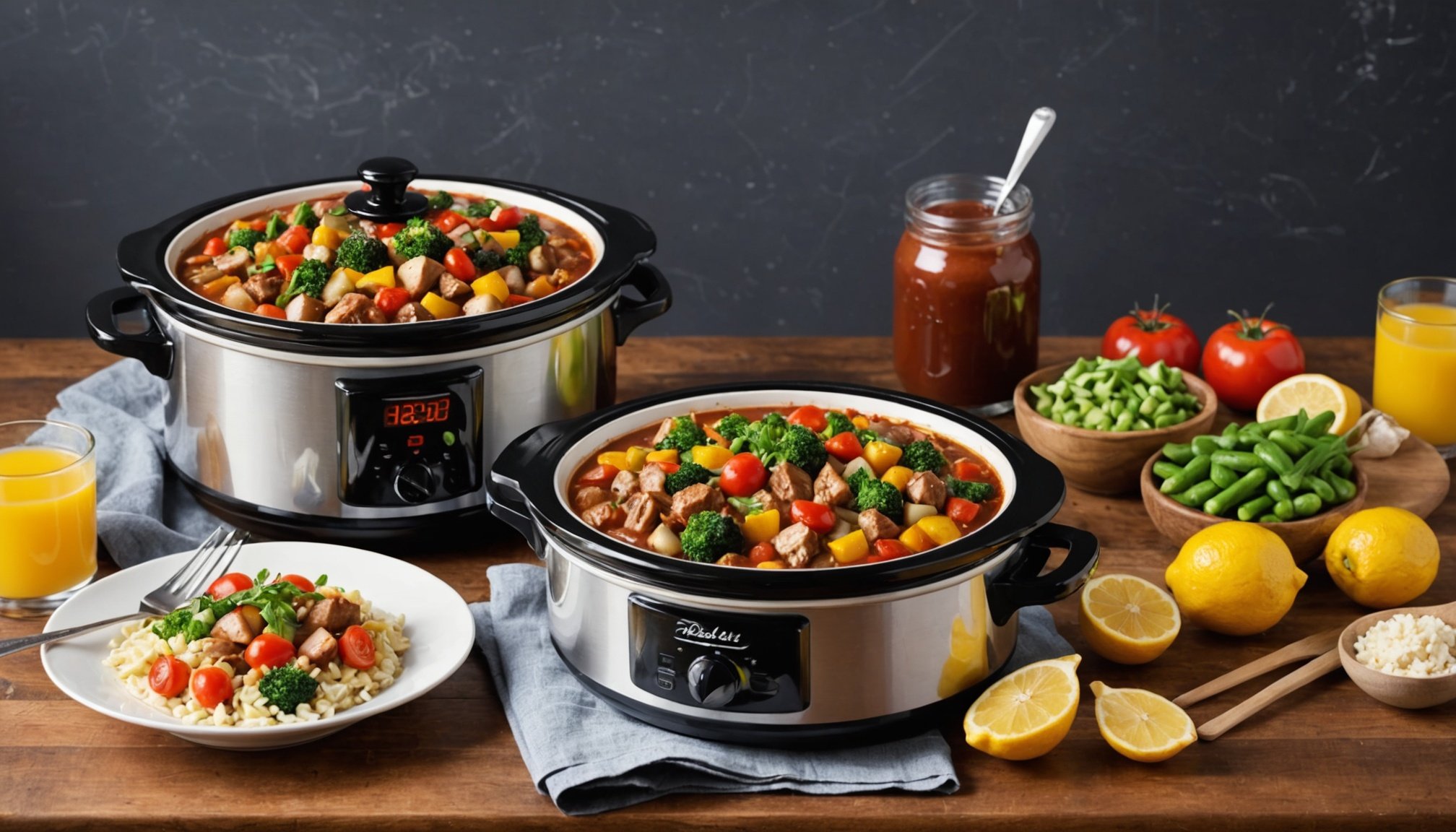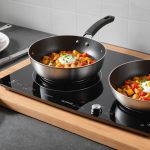Overview of Low-Fat Cooking and Slow Cookers
Low-fat cooking is gaining popularity for its health benefits, and the slow cooker is a remarkable ally in this journey. Slow cookers are known for creating healthy meals with minimal effort, making them an ideal tool for those seeking to lower their fat intake.
One of the primary benefits of using a slow cooker for low-fat meal preparation is its ability to tenderize ingredients. This method naturally extracts and enhances flavors without the need for added fats, thus preserving the nutritional advantages of low-fat ingredients. The slow and gentle cooking process allows flavors to meld beautifully, resulting in delicious meals that do not compromise on taste.
Additional reading : Taste the crunch: explore lays selection in the uk
Considering nutritional advantages, choosing low-fat ingredients ensures a balanced diet. Ingredients such as lean meats, legumes, and vegetables can be combined creatively in a slow cooker to maintain essential nutrients. With slow cooking, there’s also less risk of nutrient loss, as opposed to high-heat methods.
A slow cooker effortlessly transforms raw ingredients into healthy meals while enhancing flavor profiles. By using a slow cooker, one can enjoy a vast array of low-fat dishes that are flavorful and nutritious. This approach is especially beneficial for those committed to a healthier lifestyle.
Have you seen this : Enhance your culinary space: discover the advantages of magnetic knife strips for safety and organization
Essential Ingredients for Low-Fat Slow Cooker Recipes
Creating delicious low-fat slow cooker meals begins with choosing the right low-fat ingredients. Not only do these elements help you maintain a healthier lifestyle, but they also ensure your dishes are both flavorful and satisfying.
Lean Proteins
Lean proteins are fundamental in crafting nutritious slow cooker recipes. Not only do they provide essential nutrients, but they also support muscle maintenance while keeping calorie counts low. Popular options include chicken breasts and turkey, which when cooked slowly, absorb flavors beautifully, resulting in tender and juicy meals. Embrace these cooking essentials for a guilt-free dining experience.
Vegetables and Herbs
Adding vegetables and herbs is crucial for boosting both the taste and nutritional profile of slow cooker meals. Vegetables like carrots, spinach, and bell peppers are not just rich in vitamins and minerals, but they also bring vibrant flavors. Using fresh herbs such as rosemary and thyme enhances the fragrance and adds depth without any additional calories.
Low-Fat Dairy Alternatives
When it comes to dairy, opting for low-fat alternatives can make a significant difference in reducing overall fat intake. Ingredients like low-fat yoghurt or skimmed milk maintain the richness and creaminess of traditional recipes while cutting down on calories. This smart healthy substitution aligns with a healthy diet without sacrificing the essence of culinary enjoyment.
Healthy Flavor Enhancers
Enhancing the flavour of dishes can be achieved through the strategic use of flavor enhancers, spices, and innovative cooking techniques. These methods not only boost taste but also maintain the nutritional integrity of meals, especially low-fat dishes.
Using Spices and Herbs
Spices and herbs are powerful tools in the culinary world, offering a range of flavours from warm cinnamon to aromatic oregano. The right combination can transform bland low-fat dishes into flavourful experiences. For example, cumin and paprika can add depth to roasted vegetables, whereas basil and coriander can elevate a simple salad.
Acidic Ingredients
Incorporating acidic ingredients is another effective way to balance and enhance flavours. Elements such as lemon juice, vinegar, or even tomatoes can brighten dishes and highlight their inherent tastes. The acidity not only enhances savoury flavours but can also be used to replace fats, providing a fresh element without added calories.
Cooking Techniques
The method of cooking plays a significant role in flavour enhancement. Techniques like grilling, searing, or roasting can intensify flavours by caramelising natural sugars within the food. This process creates a savoury, complex taste that eliminates the need for additional fat. Additionally, incorporating techniques like marinating or slow-cooking allows flavours from spices and herbs to permeate deeply into the food.
A Variety of Low-Fat Slow Cooker Recipes
Exploring healthy slow cooker recipes can transform your meal planning into a delightful experience, offering diverse options that cater to a range of tastes and dietary needs.
Poultry Dishes
When it comes to delicious low-fat poultry dishes, chicken and turkey reign supreme. A slow cooker chicken curry showcases aromatic spices and balances health without sacrificing flavour. Likewise, turkey chili provides a heartier option, swapping traditional red meat for a leaner alternative while maintaining the classic, comforting taste.
Vegetarian Options
For creative vegetarian meals, think outside the box with recipes like lentil-based Thai curry or zucchini lasagna. Such dishes ensure heartiness and satisfaction, infusing innovative flavours that transform simple ingredients into culinary delights. The appeal of vegetarian recipes lies in their ability to combine textures and tastes, leading to truly wholesome meals.
Soups and Stews
Nutritious soup and stew recipes offer warmth and nourishment. A minestrone soup is packed with vibrant vegetables, while a barley and mushroom stew delivers depth and complexity. These options demonstrate how slow cookers enhance flavours over time, resulting in meals that are comforting and richly developed. With these dishes, healthy eating becomes both manageable and enjoyable.
Meal Prep Strategies for Low-Fat Cooking
Preparing your meals in advance is a valuable strategy for ensuring low-fat cooking. By planning ahead, you can save time, reduce stress, and stick to a healthier eating plan.
Batch Cooking
One effective time-saving tip is batch cooking. This involves cooking larger quantities of a meal at once and then using it for multiple meals across the week. Batch cooking not only reduces time at the stove but also makes sticking to low-fat options more manageable. Choose versatile dishes like hearty vegetable stews or lean protein dishes which can be easily incorporated into various meals.
Ingredient Prepping
Another approach is ingredient prepping. By cleaning, chopping, and portioning ingredients in advance, you minimise preparation time during busy weekdays. Prepped vegetables can be stored for salads, stir-fries, or slow cooker meals. This not only makes cooking more convenient but ensures you always have healthy options readily available.
Storage Solutions
Optimal storage solutions are crucial for keeping your meals fresh and nutritious. Invest in quality airtight containers to maintain the freshness of leftovers. Divide meals into portion-sized containers to prevent overeating and facilitate easy reheating. Remember, proper storage is not only about convenience; it’s essential for promoting healthy eating habits throughout the week.
Nutritional Information and Portion Control
Understanding how to manage your nutritional intake and portion sizes is crucial for maintaining a healthy eating lifestyle. By doing so, you ensure your body receives the necessary nutrients while avoiding excessive calorie consumption.
Understanding Macros
Macros, short for macronutrients, are essential in analyzing nutritional facts. These include proteins, fats, and carbohydrates. In a low-fat diet, focusing on the right balance is important. Proteins help repair tissues and promote muscle growth, fats provide energy, and carbohydrates fuel our daily activities. Tracking macros enables effective management of these components, offering a pathway to healthy living.
Suggesting Portion Sizes
Portion control plays a significant role in maintaining healthy eating habits. Suggested portion sizes for balanced meals can vary. However, a general guideline is to have half your plate filled with vegetables, a quarter with lean protein, and a quarter with whole grains. Identifying portion sizes helps prevent overeating, thus supporting dietary goals.
Reading Nutrition Labels
Learning how to read nutrition labels is pivotal for making healthier choices. These labels provide insightful nutritional facts that can guide your decisions. Key components to check include serving size, calories per serving, and nutrient content. Being informed about what you consume allows for wiser food selections and promotes overall wellness.
Tips for Beginners Using a Slow Cooker
Starting your journey with a slow cooker can be exciting and rewarding. Here are some essential slow cooker tips for beginners to ensure a smooth cooking experience.
Setting Up Your Slow Cooker
When setting up your slow cooker, place it on a flat, stable surface away from walls to prevent overheating. Ensure the cooker is plugged into a secure outlet. Before adding ingredients, preheat by turning the cooker to the desired setting for about 20 minutes. This step helps maintain optimal temperature throughout the cooking process.
Common Mistakes to Avoid
Avoid common pitfalls by not overfilling the slow cooker. Stick to filling it between half and two-thirds full for efficient cooking. Be cautious not to lift the lid during cooking as this releases valuable heat, potentially extending cooking time by 30 minutes each time.
Getting the Most Out of Your Slow Cooker
Maximize your slow cooker’s versatility by experimenting with various dishes. Opt for recipes that suit your lifestyle, such as stews, soups, or roasted meats, which can all benefit from the slow, even heating that a slow cooker offers. To enhance flavours, brown meats and sauté vegetables before adding them to the slow cooker. Adjust cooking times based on ingredient density and moisture content to attain desired results.











